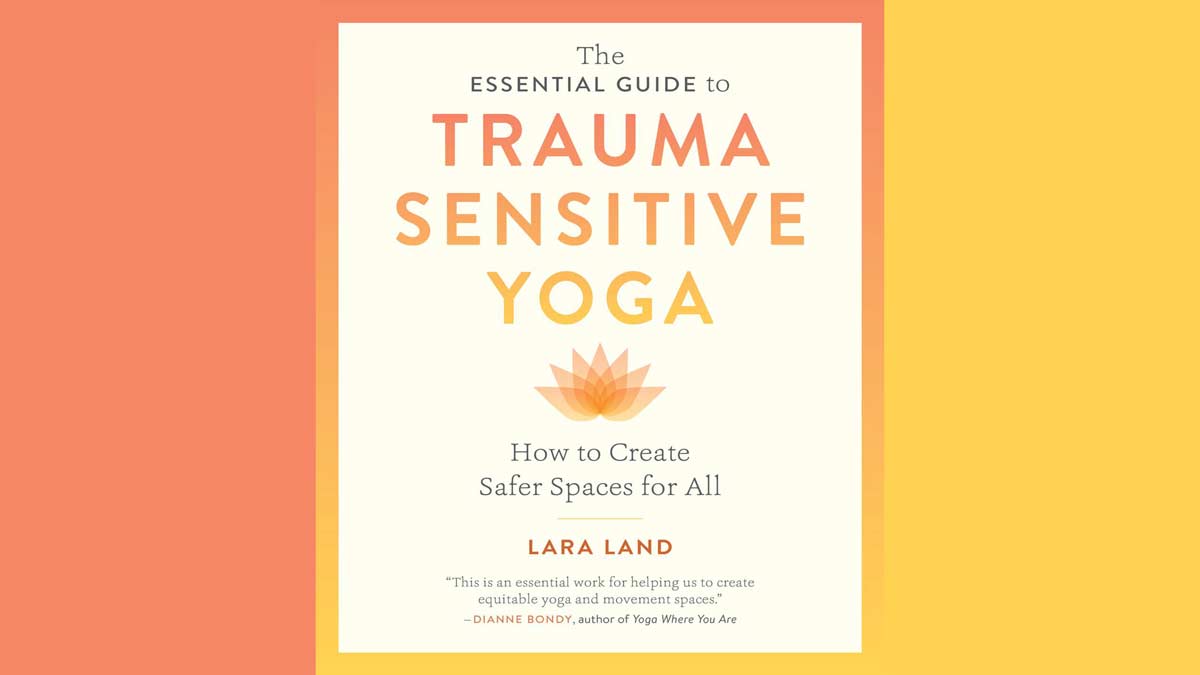The Essential Guide to Trauma Sensitive Yoga
Book by: Lara Land
Review by: Tashya Knight
BOOK CLUB

Trauma affects many of us in a variety of ways. It can often live in our bodies for years without getting the help it needs or given the space to heal. When we enter a room at any given time, we never know the stories behind the faces looking at us and this applies to the yoga classroom as well. Yoga can be a space for connection between the body, mind, and spirit along with a place to heal if we allow it. Or it can be another mindfield to navigate. The difference can come from the teacher at the front of the room.
Lara Land understands this and with her new book, The Essential Guide to Trauma Sensitive Yoga, she has created a manual for yoga teachers to be more mindful in creating the environment in their classrooms and their teaching.
The first part of this book deals with defining an understanding of trauma and how it can show up, encouraging us to build an awareness for what we might see and how we can use yoga to soften the trauma response. “The way that yoga aids a trauma survivor in self understanding and rebuilds the foundation for trusting personal instincts cannot be overstated. Once the nervous system is slowed down and much of the stress is released from the body, students become conscious of their thoughts and disentangling the misleading stories their minds are telling them. They begin to get more trustworthy information from the mind-body system. Survivors begin to trust themselves again.”
She then goes on to say,“Only when a student can trust the information they are receiving from their own mind-body system can they reestablish and trust new, healthy boundaries. Boundaries are the best form of self care. They allow us to focus on what the body and mind need to flourish, rather than what other people think we need or what other people need from us”
After this insightful explanation, the next couple chapters focus on building a trauma informed classroom, and becoming a skilled trauma informed teacher. Lara uses practical knowledge and supplies a list of techniques yoga teachers can add to their toolbox around language and environment including how to structure the rhythm of the class. She addresses avoiding triggering poses and how to manage silence and meditation. We are also provided with a helpful list of the ten key factors that ensure security in a yoga class and how we can ensure each one on the list is built in.
We then move into the second part of the book which includes detailed descriptions with pictures of 4 trauma informed yoga sequences using a chair and other props. This section includes reasoning for certain poses and how to layer the class. This is a comprehensive section taking up half of the book and is vital to understanding how a trauma informed class can be planned and come together.
After reading this guide, the teacher is left with a better understanding of trauma, encouraged to explore and do their own work, plus sequences and poses they can work with to build their own class that is welcoming and open to all students no matter the level or trauma they may be dealing with in their lives.
